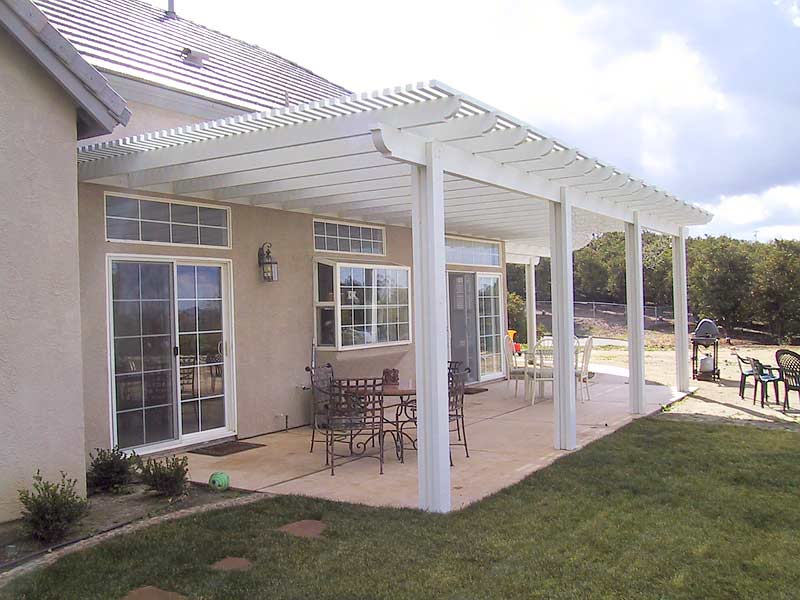<p>There are lots of different types of enclosed patios, but one of the most versatile is an enclosed patio with a retractable screens. This kind of indoor/outdoor solution gives you the freedom to enjoy your patio free of insects and debris. You can hang out on your patio rain or shine and still enjoy the breeze, the natural light, and the sights and sounds of your environment.<br />
Retractable screens can be incorporated into a variety of patio structures, and are priced, designed and even customized to fit the solution you need. Retractable screens are available for:</p>
<ul>
<li>French doors</li>
<li>Sliding glass doors</li>
<li>Windows</li>
<li>Out-swing doors</li>
</ul>
<p>If you have a partially enclosed patio, you can choose to incorporate retractable screens that enclose open areas and offer the option for a completely enclosed solution. Even if you have a patio with an awning only, you can construct a lightweight screen room to enclose the whole patio, with retractable screens in the doorways and/or windows. To ensure the structural integrity of this kind of arrangement, your best bet is to complete it entirely using retractable screens. That way, when not in use in inclement months or when you&#8217;re out of town, the screens can be retracted, which will keep them free from potentially harmful environmental influences.<br />
<strong>Different combinations and options</strong></p>
<ul>
<li>Glass or plexiglass fencing with pull-down screening that covers window to railing</li>
<li>Retractable door screen</li>
<li>Manual or motorized, controlled by hand-held remote or solar sensor</li>
<li>Choice of color combinations for both screen fabric and track</li>
<li>Solar-treated fabric to keep out harmful UV rays</li>
</ul>
<h2>Screen Engineering: Different Types of Screens and their benefits</h2>
<p>For decades retractable screens have offered comfort for outdoor lounging without interrupting the natural airflow. Engineering efforts in screen retraction have resulted in three major innovations.</p>
<ul>
<li><strong>Pleated &#8211;</strong> like a blind, the pleated screen unfolds when you need it and folds up when you don&#8217;t. Where does it go? A special housing is hidden in the pull-bar that comes with the assembly. The advantage of this type is less hardware, meaning fewer headaches down the road.</li>
<li><strong>Cassette &#8211;</strong> a spring-loaded roller system with a top or side retractor that disappears inside the screen track housing to roll the screen up and out of sight. The most common type of retractable screen, the cassette style works the same way as a retractable window shade, easily pulling down or retracting as desired. The advantage of this type is that you see nothing when the screen is retracted, so the appearance of your patio architecture is not disrupted.</li>
<li><strong>Motorized –</strong> options for motorized screens are either hand-held remote controls or solar sensors that bring down the screens depending on the position of the sun.</li>
</ul>
<h2>How Screening Is Installed</h2>
<p>Installing your screening is easy, but is likely to take some time and a little planning &#8211; so it’s best to make sure you have an afternoon free. That way by evening you’ll be sitting inside your bug-free patio enjoying a natural breeze. The only equipment you’re likely to need is a drill and a few basic hand tools like a screwdriver, pliers, etc.<br />
Window installation<br />
Mount the housing on top of the window opening, and the side tracks along the window edges. If the opening isn’t flush, don’t worry: the kit instructions will usually tell you how to adjust your installation.</p>
<h2>Door Installation</h2>
<p>Install the housing on the same side as the door hinge, or at the end of the glass panel for sliding glass doors. Likewise, with double French doors, mount the screen kit on the same side as either door hinge (depending on which direction you want the screen to open and close).<br />
What if your bottom surface is uneven? Let’s say you’re mounting screens from ceiling to ground, for instance, rather than between frames. In such cases you’ll need bottom latches that can be adjusted to account for the inconsistencies, and these are usually included in retractable screen kits.</p>
<h2>What are the Costs?</h2>
<p>Costs depend on whether you&#8217;re doing a self-install or relying on a service to do a custom install. Further expense can result from other circumstances, like the following:</p>
<ul>
<li>Custom-fitted rather than universal sizes</li>
<li>Product brand</li>
<li>Motorized rather than manual screens</li>
</ul>
<p>The base cost of the screening itself ranges from a little over $100 to $500 or more. Researching your options online or talking to a specialist at your local hardware store can get you more precise cost estimates.<br />
<strong>Author Bio</strong><br />
This article was published on the behalf of RoseSun Window Coverings a specialist in retractable screens and automated window blinds.</p>

Are Retractable Screens the Best Option for an Enclosed Patio?
